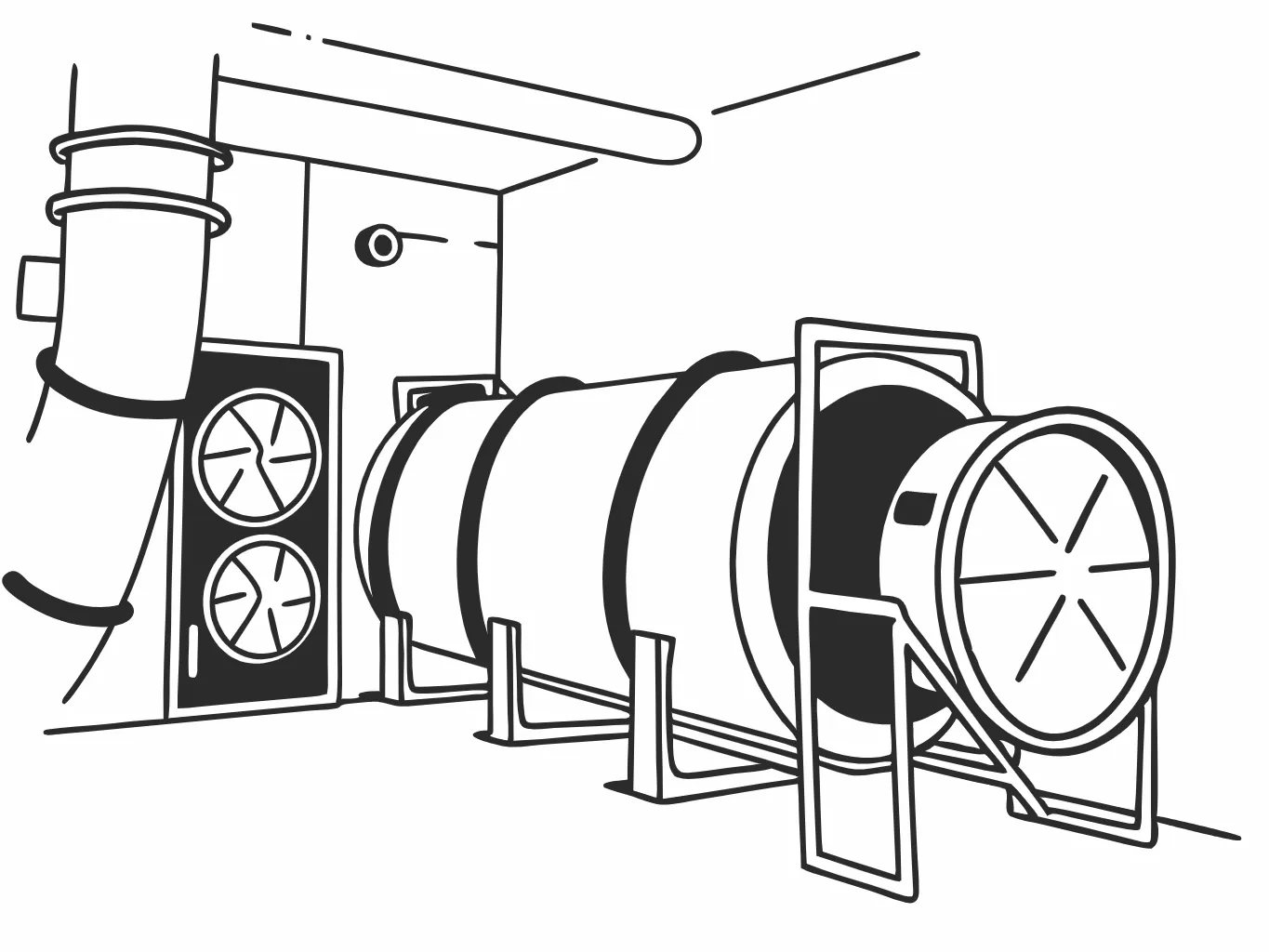În procesele industriale de uscare, alegerea metodei potrivite poate avea un impact semnificativ asupra consumului de energie și a eficienței operaționale. Două metode comune de uscare sunt uscarea centrifugă mecanică și uscarea cu aer. Înțelegerea consumului de energie necesar pentru fiecare poate ajuta companiile să ia decizii informate care să optimizeze atât costurile, cât și performanța.
Mecanic Uscătoare centrifuge
Uscătoarele centrifuge mecanice utilizează forța centrifugă pentru a îndepărta umezeala din materiale. Această metodă implică plasarea materialelor umede într-un tambur sau coș rotativ. Pe măsură ce tamburul se rotește, forța centrifugă împinge umezeala afară din materiale și prin perforațiile din tambur.
Consum energetic pentru uscătoare centrifuge mecanice:
- Consum de energie electrică: Principalul consum de energie pentru uscătoarele centrifuge este electricitatea, care alimentează motorul care rotește tamburul. Consumul de energie depinde de puterea nominală a motorului și de durata de funcționare. De obicei, aceste uscătoare sunt eficiente din punct de vedere energetic, deoarece elimină rapid cantități mari de umiditate, reducând necesitatea unor timpi prelungiți de uscare.
- Eficienţă: Uscătoarele centrifuge mecanice sunt extrem de eficiente pentru materialele care pot rezista la acțiunea mecanică. Sunt deosebit de eficiente pentru textile, materiale plastice și piese metalice mici. Îndepărtarea rapidă a apei reduce necesitatea unor procese suplimentare de uscare, economisind energie pe termen lung.
- Costuri operaționale: Deși investiția inițială într-un uscător centrifugal poate fi mai mare, consumul redus de energie și timpii de uscare mai rapizi duc adesea la costuri operaționale mai mici în timp.
Uscarea la aer
Uscarea la aer implică expunerea materialelor la aer, fie la temperatura ambiantă, fie cu aer încălzit, pentru a evapora umezeala. Această metodă poate fi pasivă (uscare naturală la aer) sau activă (folosind ventilatoare sau suflante pentru a circula aerul).
Consum de energie pentru uscarea cu aer:
- Energie termică: Dacă se folosește aer încălzit, principalul aport de energie este combustibilul sau electricitatea necesară pentru încălzirea aerului. Acest lucru poate fi semnificativ, mai ales dacă sunt necesare temperaturi ridicate pentru a atinge ratele de uscare dorite.
- Electricitate pentru ventilatoare/suflante: Sistemele active de uscare cu aer utilizează ventilatoare sau suflante pentru a circula aerul în jurul materialelor. Consumul de energie depinde de puterea și eficiența acestor dispozitive.
- Cerințe de timp și spațiu: Uscarea la aer durează, în general, mai mult decât uscarea mecanică, ceea ce poate duce la un consum mai mare de energie în timp. În plus, necesită mai mult spațiu, deoarece materialele trebuie împrăștiate pentru a asigura o uscare uniformă.
Analiză comparativă
- Viteză și eficiență: Uscătoarele centrifuge mecanice oferă de obicei timpi de uscare mai rapizi și o eficiență mai mare, ceea ce le face potrivite pentru operațiuni cu volum mare, unde timpul este un factor critic.
- Consum de energie: Deși uscarea cu aer poate fi mai puțin consumatoare de energie dacă se utilizează aer ambiental, timpii de uscare prelungiți și potențialul necesar de aer încălzit pot compensa aceste economii. În schimb, uscătoarele centrifugale, în ciuda vârfului inițial de energie, consumă adesea mai puțină energie în general datorită vitezei și eficienței lor.
- Potrivit pentru materiale: Alegerea între aceste metode depinde și de materialul care urmează să fie uscat. Materialele delicate pot să nu reziste forțelor mecanice ale uscării centrifuge, ceea ce face ca uscarea cu aer să fie o opțiune mai bună, în ciuda consumului de energie mai mare.
Concluzie
Atunci când se compară consumul de energie, uscătoarele centrifuge mecanice oferă, în general, o soluție mai eficientă din punct de vedere energetic pentru materialele adecvate, datorită capacităților lor de uscare rapidă. Cu toate acestea, uscarea cu aer rămâne o opțiune viabilă pentru materialele care necesită o manipulare delicată sau atunci când costurile energiei sunt o preocupare mai mică. Întreprinderile ar trebui să își evalueze nevoile specifice, luând în considerare factori precum tipul de material, viteza de uscare și costurile energiei, pentru a alege cea mai potrivită metodă de uscare.



